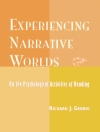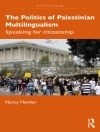This book addresses the question whether Educated Indian English is more syllable-timed than British English from two standpoints: production and perception. Many post-colonial varieties of English, which are mostly spoken as a second language in countries such as India, Nigeria and the Philippines, are thought to have a syllable-timed rhythm, whereas first language varieties such as British English are characterized as being stress-timed. While previous studies mostly relied on a single acoustic correlate of speech rhythm, usually duration, the author proposes a multidimensional approach to the production of speech rhythm that takes into account various acoustic correlates. The results reveal that the two varieties differ with regard to a number of dimensions, such as duration, sonority, intensity, loudness, pitch and glottal stop insertion. The second part of the study addresses the question whether the difference in speech rhythm between Indian and British English is perceptually relevant, based on intelligibility and dialect discrimination experiments. The results reveal that speakers generally find the rhythm of their own variety more intelligible and that listeners can identify which variety a speaker is using on the basis of differences in speech rhythm.
Robert Fuchs
Speech Rhythm in Varieties of English [PDF ebook]
Evidence from Educated Indian English and British English
Speech Rhythm in Varieties of English [PDF ebook]
Evidence from Educated Indian English and British English
Beli ebook ini dan dapatkan 1 lagi PERCUMA!
Bahasa Inggeris ● Format PDF ● Halaman-halaman 226 ● ISBN 9783662478189 ● Saiz fail 4.0 MB ● Penerbit Springer Berlin ● Bandar raya Heidelberg ● Negara DE ● Diterbitkan 2015 ● Muat turun 24 bulan ● Mata wang EUR ● ID 4525464 ● Salin perlindungan Social DRM












